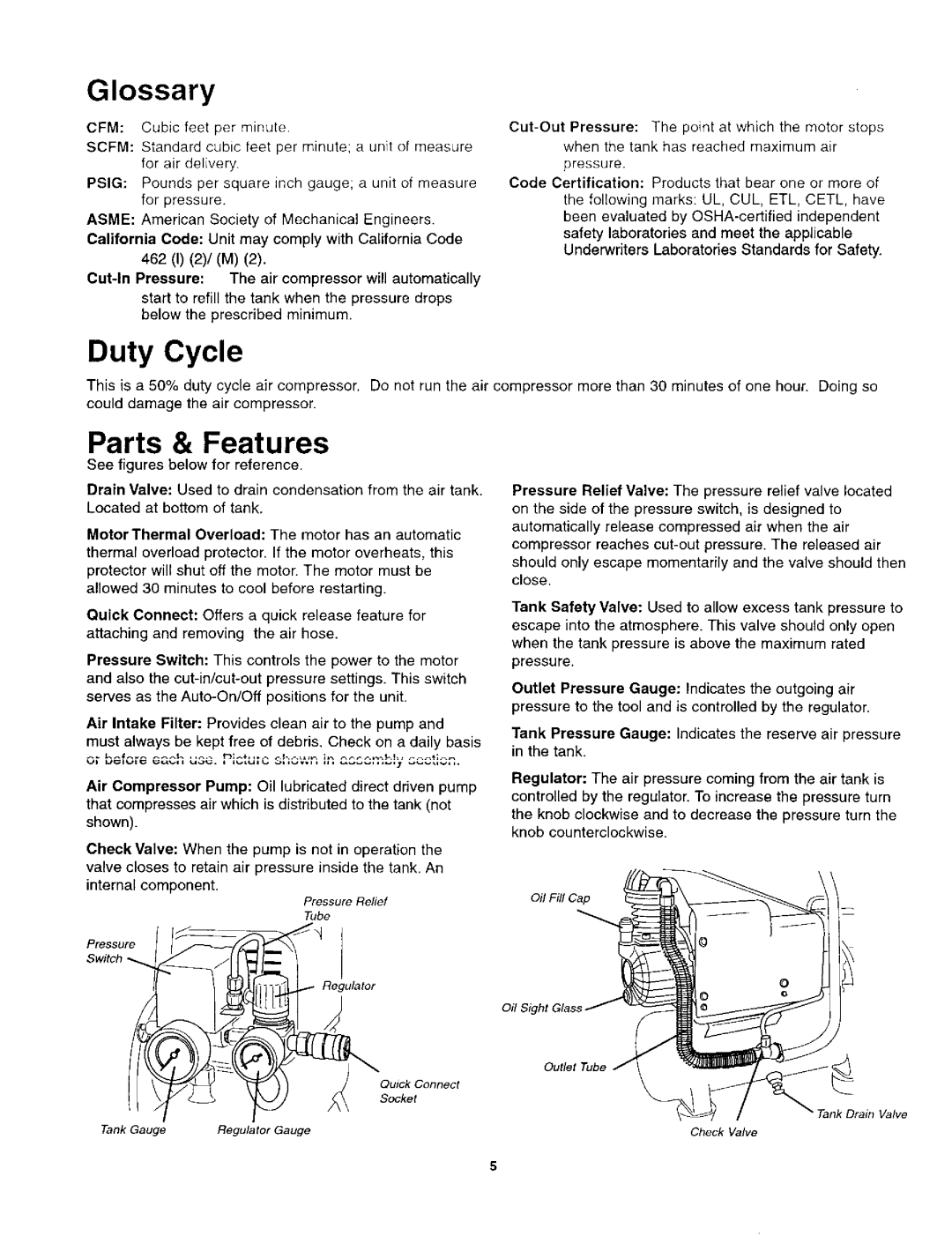921.1521 specifications
The Craftsman 921.1521 is a powerful and versatile tool that has garnered attention among DIY enthusiasts and professionals alike. This air compressor is designed to tackle a variety of tasks, making it an essential addition to any workshop or garage. With its robust features and advanced technologies, the 921.1521 stands out in its category.One of the key features of the Craftsman 921.1521 is its impressive power output. This air compressor is equipped with a 1.5-horsepower motor, providing a substantial amount of air pressure for a wide range of applications. It has a maximum pressure of 150 PSI, which allows it to handle demanding tasks such as powering nail guns, spray painting, and inflating tires with ease.
Additionally, the 921.1521 is designed with a 6-gallon tank, which ensures a steady air supply for longer periods of use. This feature minimizes downtime, allowing users to complete their projects more efficiently. The tank is also constructed from high-quality materials, ensuring durability and longevity over time.
Portability is another significant aspect of the Craftsman 921.1521. It features a lightweight design coupled with a convenient handle, making it easy to transport from one job site to another. The compressor also comes equipped with rubber feet that provide stability during operation, ensuring safety and reducing vibrations.
The Craftsman 921.1521 incorporates user-friendly technologies, such as an automatic shut-off feature that helps prevent over-pressurization. This not only protects the compressor but also enhances user safety. Furthermore, maintenance is straightforward, with easy access to all essential components for routine checks and upkeep.
Another notable characteristic of the 921.1521 is its noise reduction capabilities. With noise levels significantly lower than many competitors, it is suitable for use in residential areas without disturbing neighbors. This feature makes it ideal for home improvement projects and other tasks where noise may be a concern.
In conclusion, the Craftsman 921.1521 air compressor is a powerful, portable, and versatile tool equipped with essential features and technologies that cater to a wide range of tasks. Its combination of strength, efficiency, and ease of use makes it an excellent choice for both DIYers and professionals seeking reliable performance in their projects. Whether inflating tires, powering tools, or completing home improvement tasks, the Craftsman 921.1521 stands ready to meet the challenge.

